





Anatomo-fiziologichesky features of children
 The children's organism is in a development stage. Practically all its systems: respiratory, cardiovascular, nervous, skeletal and muscular, endocrine, etc., – stay in a stage of steady growth. Unlike the adult, the kid, the child, the teenager has absolutely other indicators which differ from each other eventually. Age anatomo-physiological features of children need to be considered at diagnosis of morbid conditions and diseases.
The children's organism is in a development stage. Practically all its systems: respiratory, cardiovascular, nervous, skeletal and muscular, endocrine, etc., – stay in a stage of steady growth. Unlike the adult, the kid, the child, the teenager has absolutely other indicators which differ from each other eventually. Age anatomo-physiological features of children need to be considered at diagnosis of morbid conditions and diseases.
Differences in a structure and functioning of a human body in a growth period and maturing predetermine a difference of approaches in diagnosis and treatment. Therefore in medicine there is a separate science – pediatrics which is subdivided into several disciplines:
- The neonatology – is engaged in treatment of newborns;
- The medicine of teenage age – studies the period of maturing of a human body.
Considering anatomo-physiological features of children, practically all medical disciplines have separate specialization as that children's surgery, otolaryngology, stomatology, neurology and so on.
Anatomo-physiological features of children in pharmacology are most visually looked through. The medical supplies suitable for treatment of adults are not always useful to children therefore they are prohibited to use in pediatrics in certain age periods.
Anatomo-fiziologichesky features of development of children
After the birth growth and weight of the child increase almost in a geometrical progression. So, on the second year of life about one centimeter and 200-250 g increases every month. By third year of life a physical activity which demands the most part of energy increases. At this time there is a maturing and formation of internals. From a musculoskeletal system anatomo-physiological features of development of children consist in rather bystry ossification of cartilaginous tissues. First of all the periosteum therefore changes at children are made as "branch" when the broken bone "hangs" on the whole periosteum is exposed to ossification. The change at the child grows together much quicker, than at the adult. Growth of a skeleton at the person continues till 21 year.
Anatomo-fiziologichesky features of children at teenage age cause such states which though are not norm, but do not cause serious fears for health of the child. Recently, in connection with acceleration, the skeleton grows much quicker, than several decades ago. Cases of sudden unconscious states at teenagers, especially male become frequent. As an explanation of similar cases serve anatomo-physiological features of children of present time. When there is a growth of a bone tissue – physiological age extension – vessels "do not manage" to burgeon in such quantity to provide with oxygen and food muscular tissue. As the consumption of nutrients sharply increases, inflow of oxygen to a brain is reduced, especially in vertical position of a body. As a result the child faints. If something similar occurs at the adult, it testifies to serious pathology.
At the child in development of these or those states integuments which area in relation to internals is much more, than at the adult have an important role. And here anatomo-physiological features of children generate in most cases unreasonable fears for health of the child. The matter is that hypodermic cellulose at the child is developed insufficiently as processes of growth do not provide fatty deposits. This feature gives the soil for development of diathesis and spasms at feverish states.
In the first years of life the neuromuscular system of the child is in a condition of a hyper tone therefore at the kid tendon jerks which at the adult are considered as pathological are defined. These are also anatomo-physiological features of children which should not be confused to diseases of a nervous system.
The alimentary system is improved within several years. At food of the child ability of digestive tract to digestion of these or those products is considered. Only eruptions of all teeth confirms readiness for inclusion in food of "adult" products which demand enough bilious juice and digestive enzymes.
Age anatomo-physiological features of children
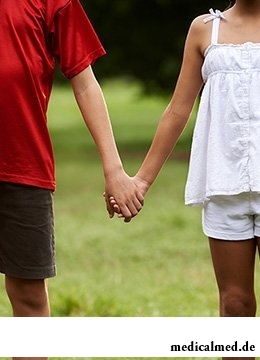 The age of children is subdivided into the separate periods of life, and each of them has the features, both in anatomy, and in physiology:
The age of children is subdivided into the separate periods of life, and each of them has the features, both in anatomy, and in physiology:
- Infancy (since the birth up to one year of life). Development of a nervous system, in particular, of the visual analyzer is of the greatest interest. Age anatomo-physiological features of children are that that after the birth till second week of life the child sees all objects in the turned state. Therefore the newborn's look "floating" as it is difficult to child to focus sight, "to compare" the external picture with the visual analyzer of the highest nervous system;
- Early children's age (1-3 years). During this period anatomo-physiological features of children consist in change of internal environment of an organism. Indicators of blood tests and urine are given closer to adult norms. Hemadens begin to function. At this age traits of character of the person and inborn diseases are defined;
- Teenage period. Anatomo-fiziologichesky features of children are most expressed in emergence of secondary sexual characteristics at this time. This age is characterized by formation of abstract and analytical thinking.
At delivery of health care anatomo-physiological features of children are always considered, other approaches, tools and medicines are used absolutely.
The most rare disease – a disease the Kura. Only representatives of the tribe Faure in New Guinea are ill it. The patient dies of laughter. It is considered that eating of a human brain is an origin of a disease.

Today about 30 diseases, sexually transmitted are known. To wide circulation of these illnesses extremely with...
Section: Articles about health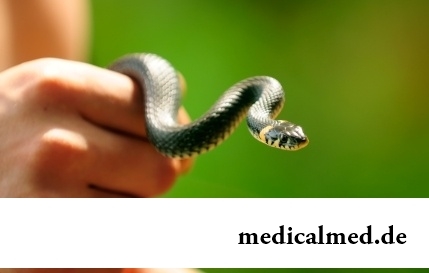
Health and attractiveness - eternal values, pursuing which people often use the most unusual ingredients and technicians. Let's consider 11 most exotic and sometimes not most pleasant Spa procedures to which the person in a pursuit for beauty agrees...
Section: Articles about health
Dogrose – one of the most widespread adornment and medicinal plants growing practically in all territory of our country. To most of Russians it is a beautiful bush it is known, first of all, as a source of fruits, extremely vitamin-rich. However curative properties of a dogrose are not limited to it at all. About how still it is possible to use a plant in the medical purposes, we will tell today....
Section: Articles about health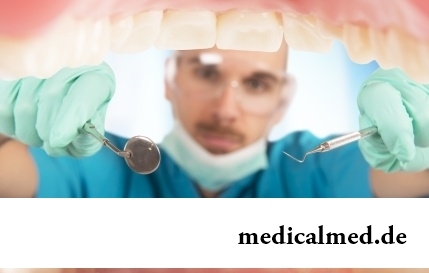
White teeth and the Hollywood smile – a dream of many people. Long time was considered that a plaque on teeth and change of their color – destiny of those...
Section: Articles about health
Frosty air, fresh wind and easy snowball at most of Russians are associated with cheerfulness, health and cheerful entertainments on which our winter is so generous. But, unfortunately, cold season sometimes brings also troubles with health. It is not about a season...
Section: Articles about health
It is known that the person for 80% consists of water which participates in all processes of an organism. The person loses liquid daily – as a result of sweating, breath, an urination, and its insufficient completion due to various reasons can lead to dehydration of varying severity. Dehydration (dehydration) occurs already in case of loss of liquid in number of 1% of body weight and can result both in easy thirst, and by the death. In time to notice signs обезвож...
Section: Articles about health
History of use of an anesthesia during operations contains more than 160 years. Annually in the world hundreds of thousands surgical вм are carried out...
Section: Articles about health
Not everyone can brag of the shining Hollywood smile. Even the person who is regularly visiting the stomatologist and watching of oral cavities over health periodically has problems: enamel of teeth darkens under the influence of some products, on it I accumulate...
Section: Articles about health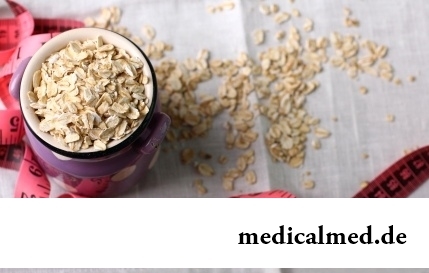
The list of stereotypes of which, apparently, all know strongly includes following: British surely eat porridge for breakfast. Perhaps, not all modern residents of Britain arrive quite so, but for those from them which continue to follow this tradition, it is possible to be glad sincerely: oat flakes are a product which regular use not only helps the person to keep force and beauty long. Porridge in a special way influences an organism, protecting it from seriousness...
Section: Articles about health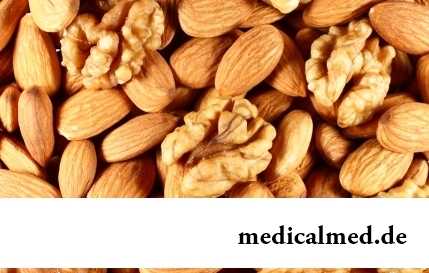
For the last decades the diabetes mellitus of the second type became really world problem. Number of cases annually cart...
Section: Articles about health
The endocrine system carries out extremely important role in a human body, practically all processes of life activity are regulated by it. Closed glands (hemadens) produce special biologically active agents – hormones which then o...
Section: Articles about health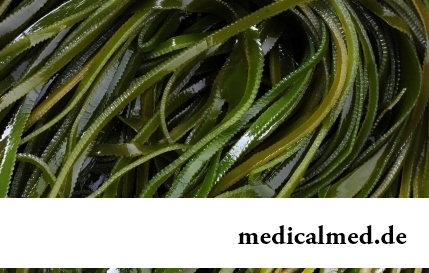
For residents of the countries of Southeast Asia various algas are an obligatory component of a daily diet. Their popularity is connected not only with high tastes, but also with numerous curative properties. Russians are a little familiar with products such that is distressing: algas are so useful that they should be eaten as often as possible. Let's get acquainted closer with useful properties of this seafood....
Section: Articles about health
Summer in the heat. Many are going to spend vacation abroad. Travelers the tender seas, rest on beaches wait, for survey достоп...
Section: Articles about health
Each woman has preferences in the field of use of those goods which help us to look good, feel young and effective. Besides: selection process of favourite perfume, shampoo or decorative cosmetics already lifts a spirit...
Section: Articles about health
People know that thermal sources have salutary force long ago. Treatment by natural waters is one of the most ancient methods of disposal of the most different diseases. Bathtubs, souls, wrappings and inhalations, in combination with water reception inside help to improve a condition of the patients suffering from disturbances of work of a musculoskeletal system, bodies of digestive tract, cardiovascular, nervous, respiratory and secretory system, skin and endocrine п...
Section: Articles about health
The unpleasant feelings connected with spring breakdown are familiar almost to each of us. Often happens that in March-April on the person...
Section: Articles about health
The saying "the rich do not know how the other half lives" is known to all. In a broad sense it is that we can not always understand the person whose features of a state are unknown to us. If with physiological characters of diseases the situation is more or less clearly (having noticed and...
Section: Articles about health
Color of plants is caused by presence at them of certain chemical compounds. Let's talk about what is meant by various colors of vegetables and fruit and what properties they give them....
Section: Articles about health
Maternal milk is the best food for the newborn. It is the unique natural product containing optimum set...
Section: Articles about health
Very often as a source of the infection which caused a disease serves our house - the place which a priori has to be safe. However disease-producing bacteria can perfectly feel not only in insanitary conditions, but also in our apartment if not осущ...
Section: Articles about health
Coffee - the tonic loved by many for the invigorating aroma and deep taste. Having the stimulating effect, coffee increases working capacity, promotes concentration of attention, fights against drowsiness and improves mood. Statistically, about 30% of inhabitants of the planet regularly use coffee, from them more than 8% are "coffee-achievers" - the persons using more than 3 cups of drink a day....
Section: Articles about health
Healthy lifestyle today in fashion, and many parents think of that the child from the early childhood played sports. To a Torah...
Section: Articles about health
Cystitis, or inflammation of a mucous membrane of a bladder, this very widespread disease which, owing to some features of a structure of bodies of urinogenital system, women have approximately four times more often than men. In the main risk group...
Section: Articles about health
For most of the working people the problem of having a snack is particularly acute enough. Sooner or later there is a question: what can be eaten quickly between a breakfast and a lunch or a lunch and leaving from service so that to receive necessary power feed, but not to overload an organism with harmful components or excess calories? We bring to your attention the list of products which quite conform to these requirements....
Section: Articles about health
Sugar - the digestible refined product which is not of special value for an organism of the modern person. Use...
Section: Articles about health
Such trouble as the milkwoman's attack, at least once in life happened almost to each woman. Prevalence of a disease is explained by the fact that the causative agent of an illness belongs to the so-called opportunistic microflora living on mucous an obol...
Section: Articles about health
Iodine - one of thirty most important microelements in our organism. The main role of iodine consists in synthesis of thyroid hormones of a thyroid gland - the substances which are responsible for the majority of exchange processes of an organism. It is known that thyroid hormones consist of iodine more than for 65%. The lack of iodine leads to decrease in production of hormones and, as a result, development of a hypothyroidism. The long condition of deficit can become a source of problems of the cardiovascular, bone, digestive SI...
Section: Articles about health
